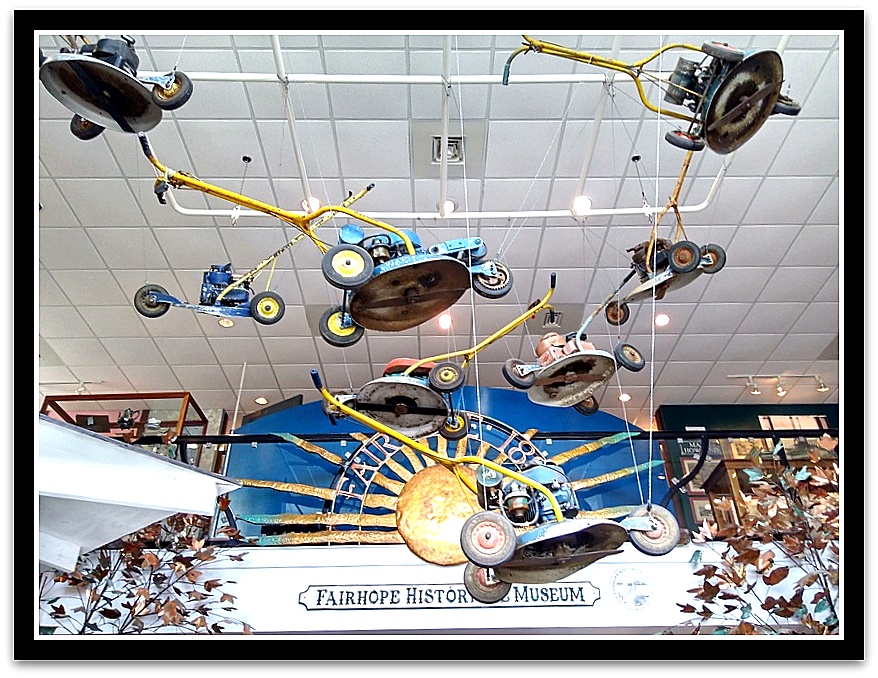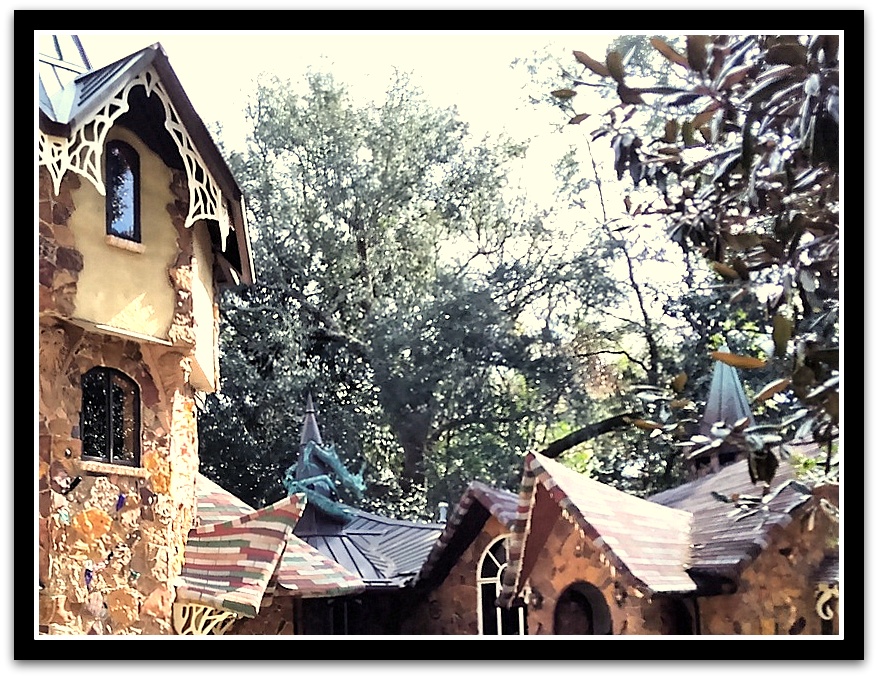Yup, its a elusive Piney Wood Dinosaur!
Tucked in the trees along the Barber Parkway in Elberta is a few things you wouldn't expect to see in Alabama - Stonehenge and a couple of dinosaurs. If you drive all the way to the marina (which we skipped on this trip) there are also some knights and a giant lady in the lake
How to get there: "Drive US Hwy 98 either eight miles east of Foley, AL, or 21 miles west of downtown Pensacola, FL. Turn south onto County Rd 95. Drive five miles. Turn right onto Fish Trap Rd. Drive a half-mile. Turn left at the Barber Marina sign. Drive one mile." The knights are on trails by the marina parking lot and we understand the 'Lady of the Lake' is in a fenced off area of the marina.
Bamahenge is on the right, set back in the trees about 150 yards or so. There are no signs, but it can be spotted from the road.
The installation, a fiberglass art piece by Mark Cline is known locally as Bamahenge.
"Mark designed Bamahenge to be 21 feet tall and 104 feet across, essentially identical in size to the original. It's correctly aligned with the summer solstice; the point of sunrise is over the center of three lintels on the outer markers. There are actually only four different stone shapes, but with clever flipping and repositioning, all of them look different."
Cline consulted with astronomers, so while the piece is not a complete model of Stonehenge, the fiberglass stones that are on the site do line up correctly for the summer solstice! (Oh, and they are anchored in concrete and designed to be resistant to hurricanes)
Mark Cline also created the dinosaurs. Currently there are four dotting the woods near Bamahenge.
The story goes that Mark was building dinosaurs at his Virginia studios for an amusement park, when a man stopped and said his brother might be interested in the 'lawn ornaments'. Mark made up a ridiculous price to get rid of the guy - but two weeks later the guy called back and said he wanted seven! Turns out the guy was the brother-in-law to George Barber, a billionaire.
After installing the dinosaurs, Mark Cline got a call that George wanted glass eyes in his dinosaurs. He ended up being flown back down - just to add glass eyes!
The dinosaurs were supposed to be installed outside a raceway that George was designing, but when plans changed, he moved four of the dinosaurs out to the marina.
In 2006, the dinosaurs were damaged by a hurricane. Mark flew down (again) to repair the dinosaurs, which gave him a chance to talk to George about creating a life-size replica of Stonehenge.
We have now seen two Stonehenges, Elberta and Ingram, Texas - only a few more to go. Hmmmm, maybe it's time to visit Odessa, Texas?

































